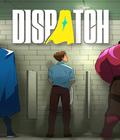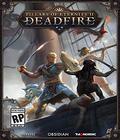Pre-order Pillars of Destiny II: Deadfire
When the original Pillars of Eternity was announced via Kickstarter in 2012, it had been a while since players had seen a CRPG that focused on attributes and abilities like Baldur's Gate and Neverwinter Nights. The Kickstarter was a success, and while it took three years before the public got its hands on it, the final game turned out to be everything that fans had expected. A sequel was inevitable, and even though Pillars of Destiny II: Deadfire offers more of the same, it also provides enough new elements that the game remains fresh. We got our hands on the latest beta to see what's changed.
Compared to the original title, there have been quite a few changes to the gameplay mechanics. One of the more notable differences is that the party size has been reduced from six to five. Unless players have a ranger class with an animal companion, they'll control only five people at a time. The developers say that the reduction in party size helps the player to better manage the characters.
The ability to pause during combat now allows players to retarget an enemy or ally in case they move out of position before the spell is cast. Considering how long it can take for a spell to finish, players will be thankful that the retargeting can also occur in the middle of spell preparation. Elsewhere, you can control the kind of automation the game has over your AI. By default, turning on this feature allows the AI to be good about when to attack and use its special abilities. You can then tweak the degree to which the AI does things on its own or even disable the feature altogether.
Outside of combat, the other mechanics remain the same, like item crafting and the ability to choose different conversation approaches. Your character has a more detailed skill tree, so you can get a quick visual on which upgrades and relative paths are available. Even more enticing is the fact that you can now assign dual classes to your character, so hybrids like ranger monks or warrior mages are viable here.
The big feature comes from the change in locale. With the seas open for exploration, you have a ship to navigate the world. There is more depth to the ship than just as a customizable vehicle. It serves as a living character, since you have a crew that takes care of the basic tasks, minus the navigation. You will need to manage their supplies to keep morale high, which makes the game feel like a rudimentary sim. The ship's crew can also level up, so even the worst deckhand can become pretty decent with some grinding.
The sea provides you with opportunities to meet other ships and, much like on land, you'll be forced into combat with vessels that don't appreciate who you've aligned with. If you decide to board a ship, you'll use the real-time, menu-driven combat that you're already using in land battles. If go for ship-to-ship fighting, then you're taken to a more turn-based combat system that's usually reserved for strategy games. The fighting becomes no less hectic, as you'll worry about whether to spend a turn loading cannons or trying to get some distance so you don't get hit.
Much like Assassin's Creed IV: Black Flag, the ship mechanics can steal your attention if you aren't careful. The beta allowed for a great deal of ships to fight, and various side-quests can erupt from sailing around the known world. Even though this is all labeled as being subject to major changes due to tweaking, the systems in place work well enough for those who want to take a break from the main story.
The presentation is good, but one can see where improvements can be made. Character models are done well, but you'll only notice this when you're creating a character or examining your party. Environments look stunning, especially when you're seeing the ocean waves play out at a nice 60fps among the swaying trees of nearby islands. Music is sparse at the moment, but what's here sounds nice. The voices, however, will need some tweaking. The actors deliver their lines well, but the constant shouting of status reports and misses can be grating when you see that the call sometimes doesn't match the situation.
Based on what's in the beta, fans of the original will be more than pleased with how Pillars of Destiny II: Deadfire is turning out. The tweaks to the basic mechanics are almost all welcome, and if the game just relied on this, it would still be solid. However, the addition of seafaring makes the game feel different among recent CRPG offerings while still maintaining the high fantasy element that has become the bedrock of the genre. The fact that the seafaring is just as deep as the regular land-based mechanics means that players will spend more time with it. Look for more coverage of the game as it inches closer to its April release.
More articles about Pillars of Eternity II: Deadfire











 Pillars of Eternity II: Deadfire is an isometric, party-based RPG, that improves upon the rich narrative, beautiful environments, and intricate, tactical combat from the original.
Pillars of Eternity II: Deadfire is an isometric, party-based RPG, that improves upon the rich narrative, beautiful environments, and intricate, tactical combat from the original.



























